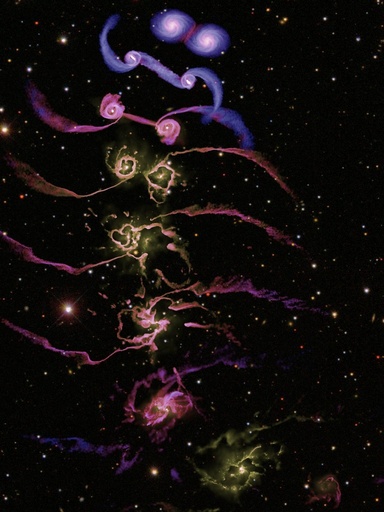Snapshots of the time evolution of
a collision of two spiral galaxies with black holes at
their center from a computer simulation.
Color indicates temperature and brightness the gas density. When the
galaxies and their
black holes collide a quasar is ignited which expels most of the gas in
a strong wind. The remaining galaxy contains very little gas but a
large supermassive black hole.
The
black hole mass and the end is related
to the size of the galaxy in agreement with
observations.
Medium resolution (767x1024)
Highest resolution (1534x2048)

This computer
animation
visualises the full time evolution of a galaxy collision simulation of
two spiral
galaxies that host supermassive black holes at their centres. Only the
gas distribution in the galaxies is shown. As in the figure, brightness
represents gas density while
the colour hue indicates gas temperature.
Medium quality (10 MB, 1024x768)
Highest quality (22 MB, 1024x768)
Attention:The movie has been compressed
using DIVX. To play under Mac or Windows please install the free divx-codec software from http://www.divx.com.
Under Linux the movie can be played using
"mplayer" or "xine"